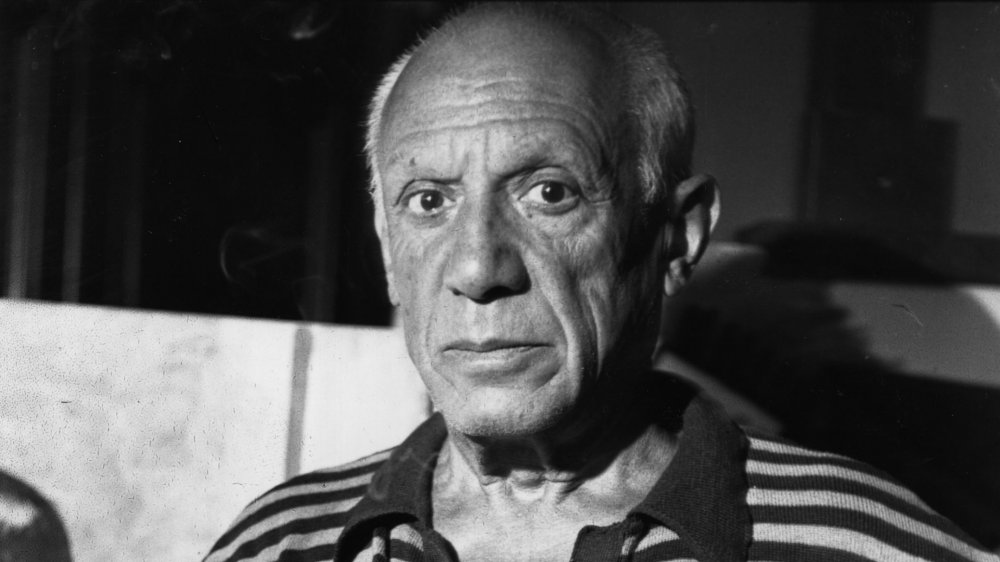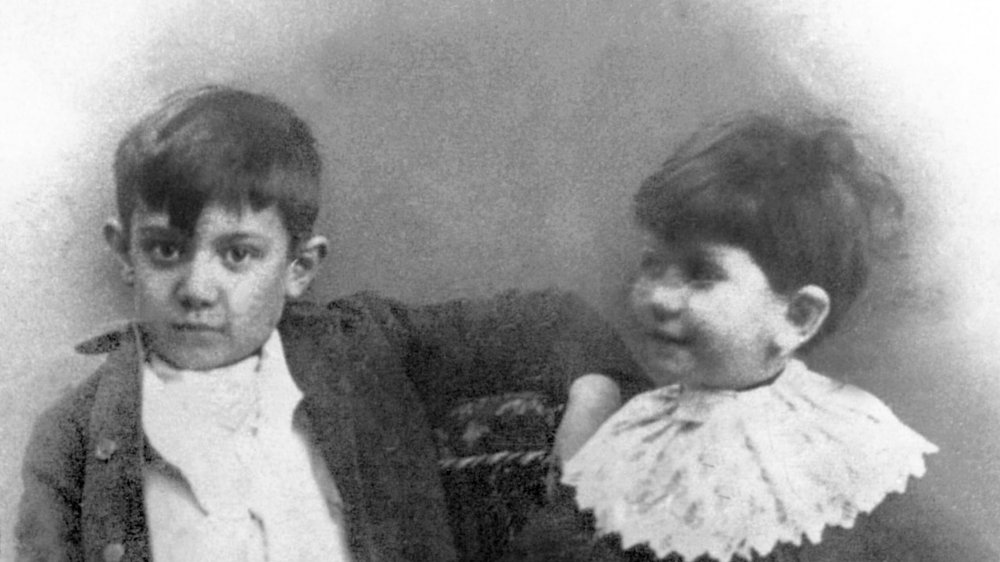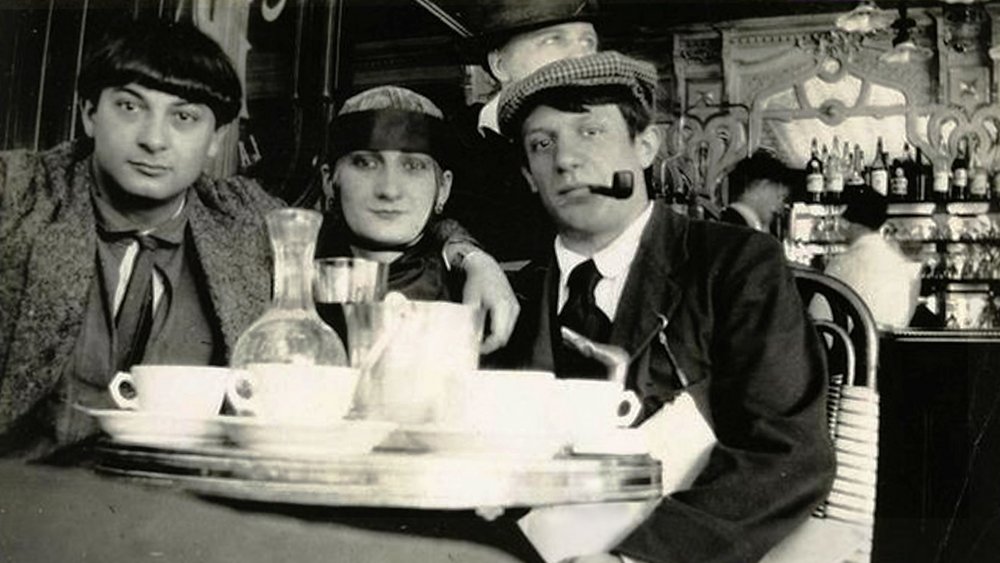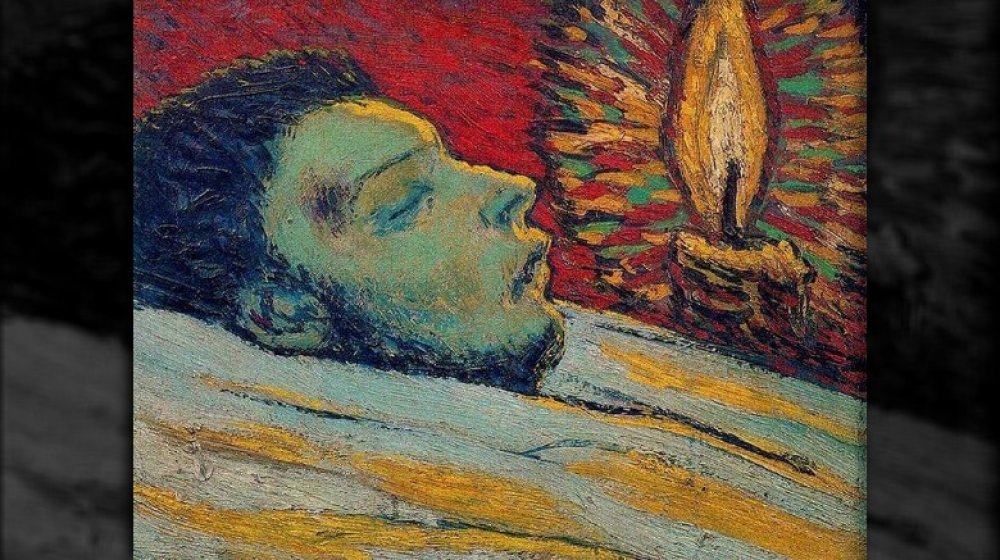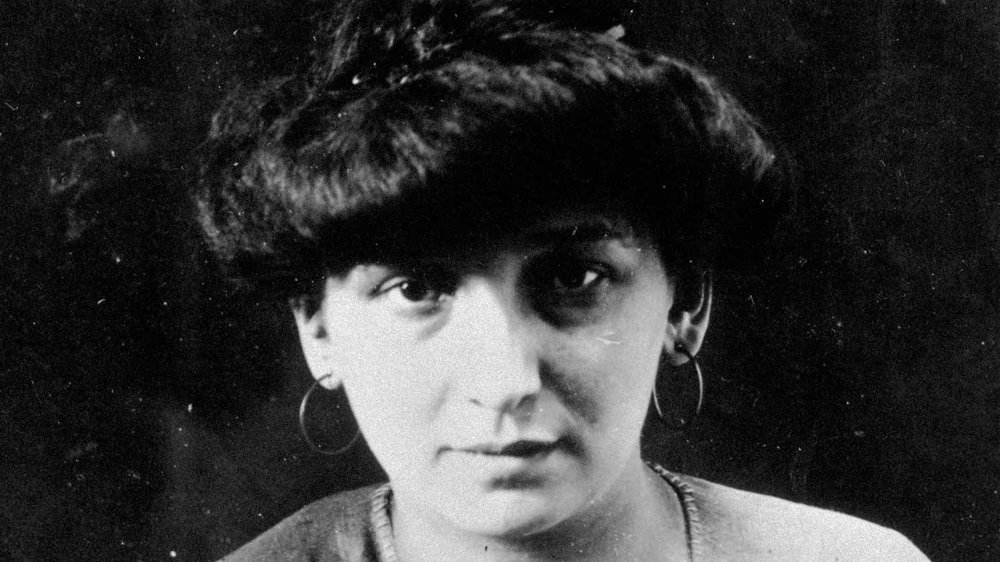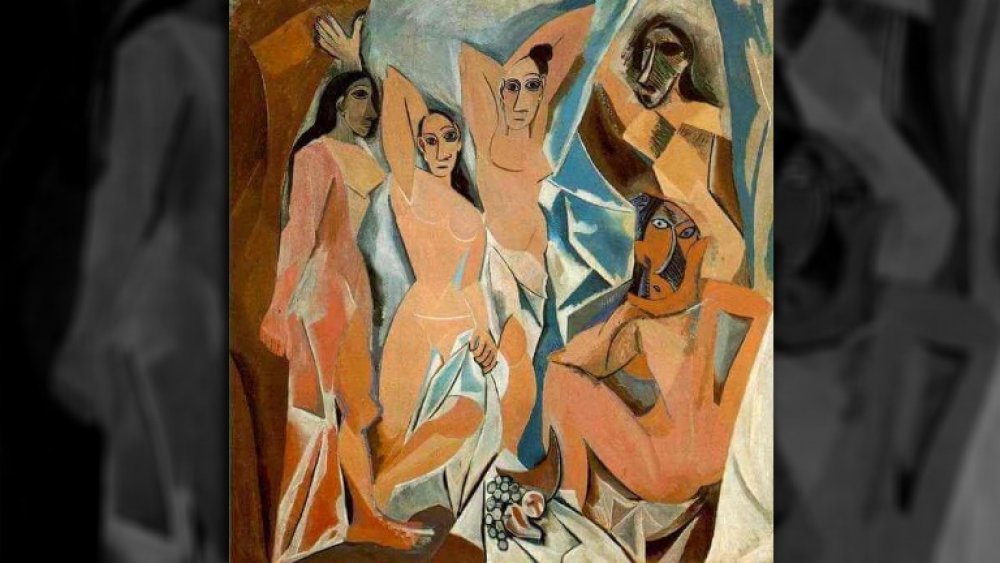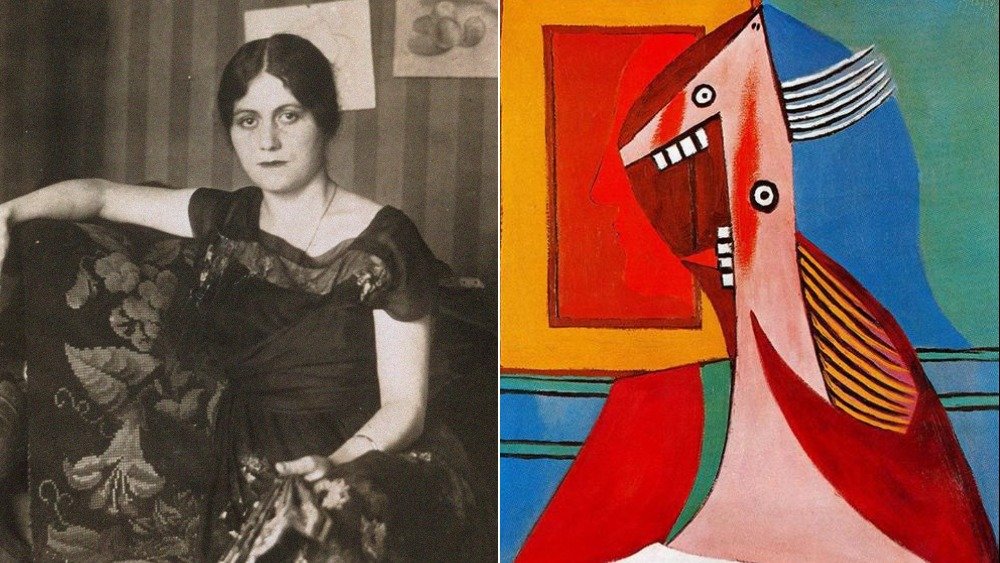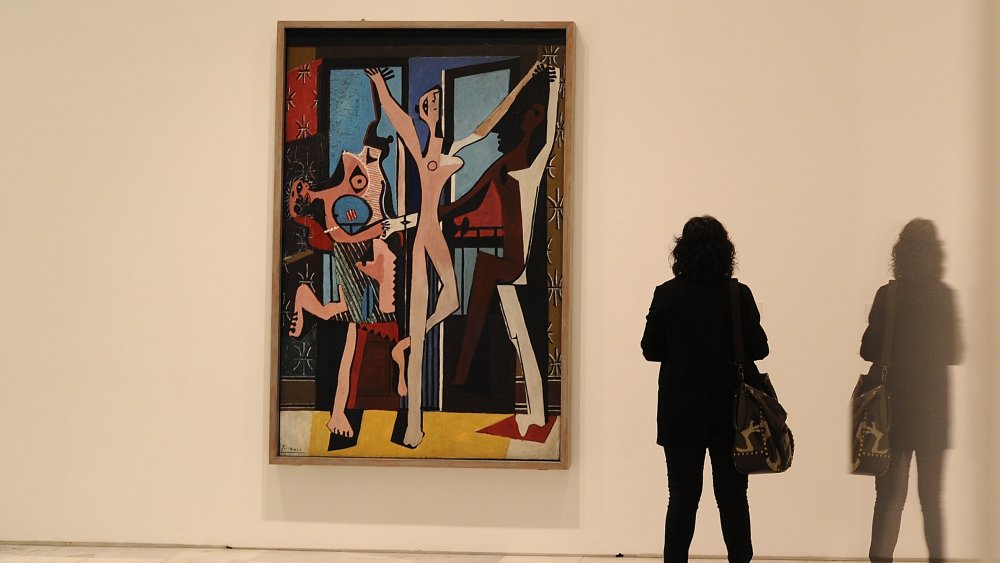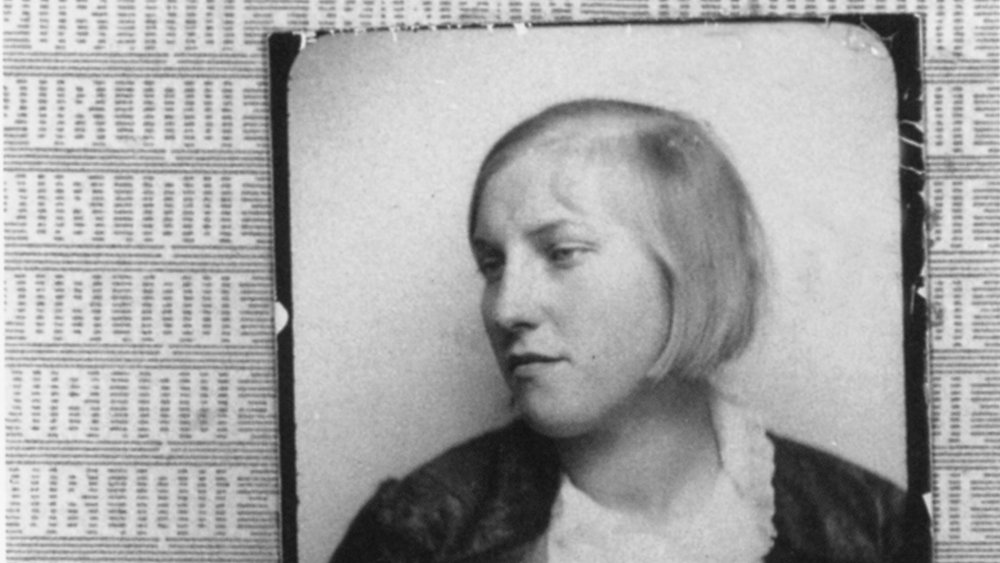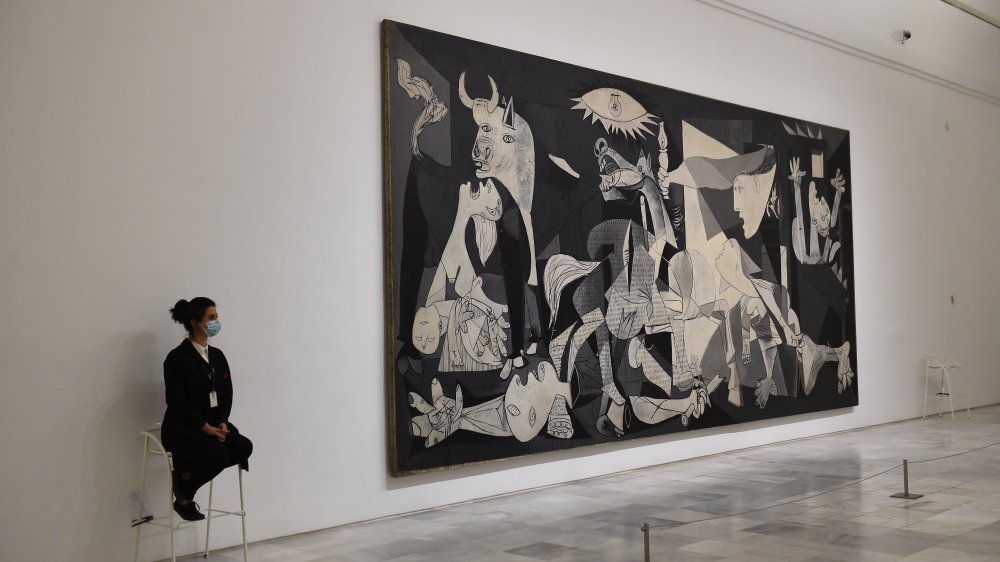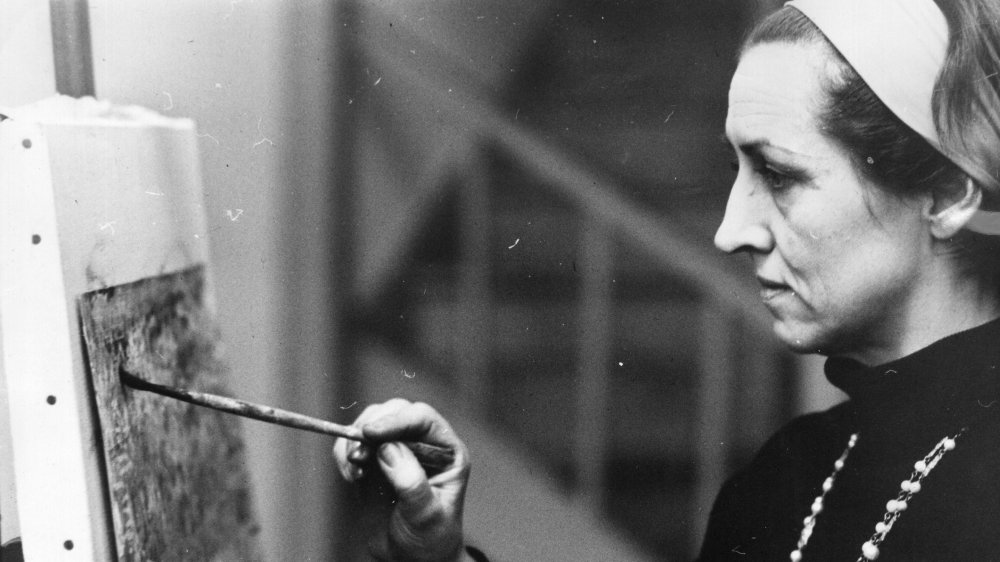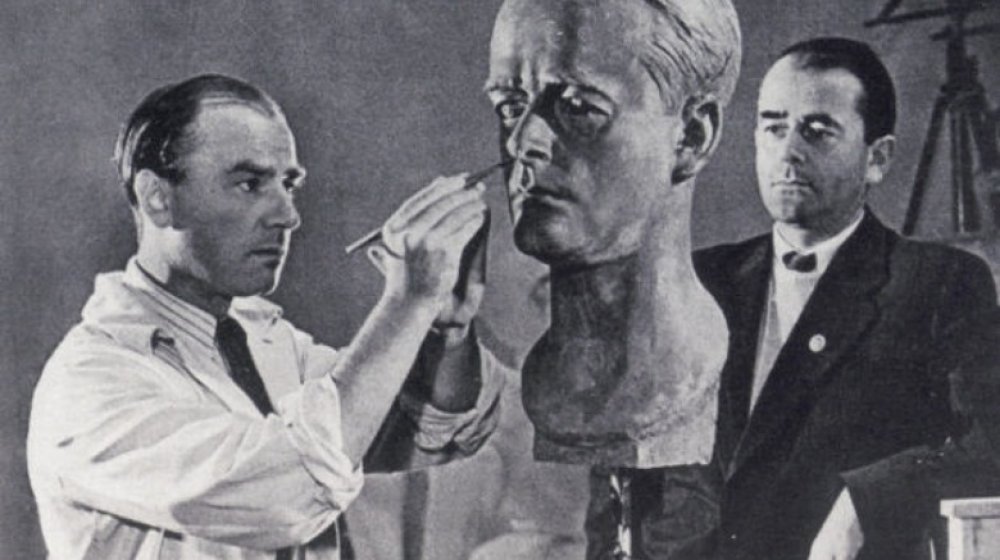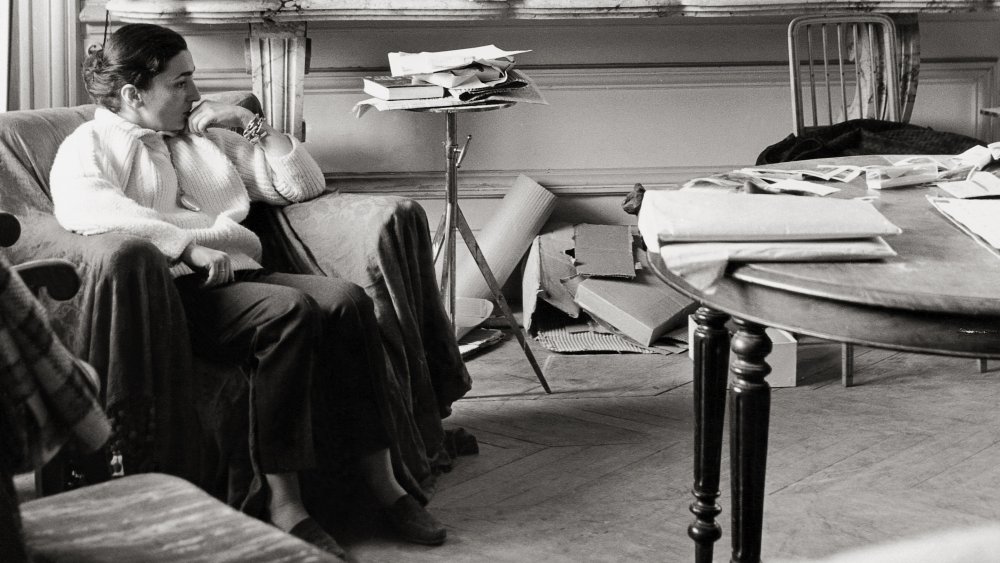The Messed Up Real-Life Story Of Pablo Picasso
Baptized Pablo Diego José Francisco de Paula Juan Nepomuceno María de los Remedios Cipriano de la Santísima Trinidad Martyr Patricio Clito Ruíz y Picasso, Pablo Picasso was one of the most popular Western artists of his time and his legacy precedes him to this day. He worked primarily as a painter, though he was a prolific sculptor and printmaker as well. Picasso died at the age of 91, creating over 145,000 pieces of art throughout his long life. While he's primarily credited for his cubist work, his artistic style was varied and ambiguous. He dabbled in religion and politics, but ultimately Picasso fell under his own label.
Spending most of his life in France, Picasso's life was punctuated by various love affairs with decidedly young women who served as inspiration for his artistic work.
Pablo Picasso was one of the few artists who was able to achieve both fame and fortune during his lifetime. At the time of his death in 1973, his estate was worth between $100 and $250 million, roughly between $500 million and $1 billion today adjusting for inflation. But despite his success and his wealth, the life of Picasso wasn't always rosy. This is the messed up real-life story of Pablo Picasso.
Trained from a young age
Pablo Picasso was born on October 25, 1881, into a middle-class family in Málaga, Spain. He went by Pablo Ruiz y Picasso for a time, though he would drop his father's surname in the road to Picasso.
According to the book Pablo Picasso by art historian Victoria Charles, some say Picasso could draw before he could even speak. He had an immediate attraction to artists' tools and would prefer tracing pictures in the sand to playing childhood games. Picasso's father was also a painter, specializing in realistic depictions of birds and wildlife, and when Pablo Picasso was 7 he began receiving formal training from his father.
When Pablo Picasso's family moved to A Coruña in 1891 due to financial difficulties, Picasso's father, José Ruiz y Blasco, took up a position at the local School of Fine Arts as a drawing and painting teacher while Pablo Picasso was accepted into the school as a student. For several years Picasso would study painting in the classroom and at home, but in 1895 tragedy struck when his 7-year-old sister, Conchita, passed away from diptheria.
According to The Atlantic, the death of his sister was a source of great anguish for Picasso. As he decided that God was evil for allowing Conchita to die, his paintings took on a religious tone. After Conchita's death the family moved to Barcelona and Picasso transferred to its School of Fine Art, later studying briefly at Madrid's Royal Academy of San Fernando as well.
Paris and Picasso at the turn of the century
In 1900, Pablo Picasso traveled to Paris to cover the Exposition Universelle for Barcelona's Cataluaya journal. But he wasn't only going as a journalist. According to the State Hermitage Museum, having already gained a bit of fame in Spain, Picasso was now breaking into the international art scene. In the Spanish section of the Exposition Universelle hung his painting Last Moments. Picasso arrived in Paris with his friend Carlos Casagemes and moved into Bateau-Lavoir, an apartment building in Montmartre. It was in Paris that Pablo Picasso was exposed to artists such as Van Gogh, Bonnard, Cézanne, Degas, and Toulouse-Lautrec.
Picasso stayed in Paris for several months before he returned to Spain with Casagemas, but his friend went back to Paris in February 1901, having fallen in love with a young model named Germaine Gargallo. According to ThoughtCo, Casagemas wanted Gargallo to marry him, but she was already married and rejected his advances.
Later that month on February 17, 1901, during a dinner with friends and Gargallo, Casagemas got drunk and once more asked Gargallo to marry him. When she refused he shot at her, missed, and then shot himself and died. Pablo Picasso would later have a short affair with Gargallo, and the two stayed in each other's lives for many years.
If you or anyone you know is having suicidal thoughts, please call the National Suicide Prevention Lifeline at 1-800-273-TALK (8255).
Pablo Picasso's Blue Period
After Casagemas shot himself, Pablo Picasso returned to Paris in May 1901. While Picasso wasn't present when Casagemas took his life, Picasso later said that "it was thinking about Casagemas that got [him] started painting in blue." One of the first pieces he created in response to Casagemas' suicide was "The Death of Casagemas" (above), an oil-on-wood piece that depicted his friend in a coffin with the bullet wound on his right temple. While this painting incorporates warm colors, the sickly blue is beginning to creep in.
According to Widewalls, Picasso's Blue Period reflects his experiences of instability and poverty, demonstrated in the many representations of beggars, prisoners, and blind people. Pablo Picasso was especially influenced by a visit to the St. Lazare women's prison in Paris, where nuns served as prison guards. An example of this is "Two Sisters," which he describes in a letter to Max Jacob as representing "a St. Lazare whore and a mother." The "whore" is differentiated by the white bonnet on her head, headgear that was mandatory at the time for syphilitic prostitutes in prison.
The use of blue to symbolize pain comes out of many influences, ranging from Symbolist painters like Paul Gauguin to Romantic writers such as Alfred de Vigny. Since Picasso was also mixing Christian iconography with the realities of everyday life, the blue colors used can additionally be seen as a symbol of Mary.
Pablo Picasso's first muses
One of Pablo Picasso's first muses and models was Fernande Olivier (above), born Amélie Lang, who met Picasso in 1904. As Picasso began a relationship with Olivier, his paintings took on notably warmer colors, including pinks and reds, resulting in what is known as Picasso's Rose Period. The uptick in his mood could also have been attributed to his newfound prosperity due to the patronage of art dealer Ambroise Vollard, according to Biography, but of course it's more romantic to focus on Olivier. (Picasso also met Gertrude Stein during his Rose Period, in 1905. Stein had inherited enough money to allow her to become and art collector, and her financial patronage was invaluable to Pablo Picasso.)
During their relationship, Olivier was a source of inspiration for Picasso, modeling for paintings and plaster casts for pieces such as "Fernande with a Black Mantilla" and "Head of a Woman (Fernande)." Oliver became the subject of some of Picasso's earliest cubist works as well. Later in his life Picasso would reveal that "Les Démoiselles d'Avignon" was also based on Olivier.
According to Another Magazine, Olivier had moved to Paris to become an artist's model, but once she started a relationship with Pablo Picasso he forbade her from modeling for other artists. After mutual infidelities, Picasso and Olivier ended their relationship in 1912. Picasso left Olivier for Eva Gouel, though their relationship would be short-lived due to Gouel's untimely demise in 1915.
The influences of African art on cubism
European avant-garde art movements were heavily inspired by themes adopted from African art. According to the BBC, Pablo Picasso first became interested when he saw a figurine from the Vili people in the home of artist Henri Matisse in 1906. Picasso himself later acquired ancient Iberian sculptures stolen from the Louvre museum by an acquaintance. These masks later served as a direct inspiration for the faces of the women in "Les Demoiselles d'Avignon" (above).
When Picasso showed "Les Demoiselles d'Avignon" to his friends in 1907, many in his circle had a negative reaction to the painting, and as a result Pablo Picasso didn't exhibit it to the public until 1916. However, his cubist work earned him the representation of Daniel-Henry Kahnweiler in 1908, who successfully championed Picasso's work to the art world.
According to Historical Influences of Picasso's Les Demoiselles d'Avignon by Cory McKay, while Picasso denied being inspired by African art, both Matisse and Jacob stated that Picasso was shown masks before he painted "Les Demoiselles d'Avignon." Olivier also reportedly said that "Picasso was becoming a fanatic on the subject of Negro works, and statues, masks, and fetishes from every country in Africa were accumulating in his apartment."
According to the Guardian, up to the end of his life Pablo Picasso was filling his studio with many different African works, continuing to find inspiration in them, like in "Musician," which is reminiscent of his collected African Grebo masks.
Pablo Picasso had lots of muses
In 1917, while Pablo Picasso was working on the costumes and set design for a production of "Parade," he met a ballet dancer named Olga Khokhlova (left). They married on July 12, 1918, after Khokhlova decided to stay in Barcelona with Picasso while the ballet traveled to South America.
According to Another Magazine, during her time in the ballet, Khokhlova had posed for promotional ballet posters, which translated perfectly to sitting for Picasso's paintings. Picasso would create and recreate Khokhlova as his art developed and experimented with itself. Once their son Paulo was born in 1921, Picasso's paintings began exploring themes of femininity and motherhood, like the depiction of Khokhlova and their son in "Mère et enfant au bord de la mer."
However, the paintings of Khokhlova lack the warmth that paintings of Olivier radiate. According to Hyperallergic, Khokhlova is frequently depicted as being turned away. Even before Paulo's birth, "Femme lisant" (1920) shows her preoccupied, distant, and impenetrable. Khokhlova and Picasso's relationship was already strained, and in 1927 Pablo Picasso started an affair with Marie-Thérèse Walter. As Khokhlova dwindled in his eyes, her image became sharper and obtuse, like in "Bust of a Woman with Self-Portrait" (1929, right).
When Walter became pregnant in 1935, Pablo Picasso admitted to the affair. In response, Khokhlova took their son to the south of France and filed for divorce, but since Picasso refused to divide his property evenly as required by French law, they would remain married until Khokhlova's death in 1955.
Neo-Classicism and surrealism
Pablo Picasso traveled to Italy in February 1917, where he saw the Renaissance art of Raphael, Michelangelo, and Bernini. He sought to emulate these artists and his style shifted back toward figurative painting that was strikingly more classical than it was cubist. According to the Guardian, Picasso's turn to the neoclassical is a continuation of the themes he sought in his earlier work. "Two Women Running on the Beach" is considered a typical example of this revival of classical motifs.
During the 1920s, the writings of Sigmund Freud were gaining popularity among the Surrealists, who pushed against coherency and the constraints of the rational mind. Surrealist writer André Breton called Pablo Picasso "one of ours" and in 1925, Picasso exhibited some of his cubist pieces at a Surrealist group art show. While Picasso never openly embraced Surrealism as the methodology for his art, the breakdown of the conscious in his cubist paintings has been tied to Picasso's frustrations during his marriage to Khokhlova.
Paintings such as "The Three Dancers" (above) demonstrate the frenzy of a dancing woman, her boundaries blurred by violence, while "La lecture," a portrait of Marie-Thérèse Walter, underlines the eroticism of the body that is entirely occupied with the viewer.
Even more of Pablo Picasso's muses
Marie-Thérèse Walter, above, met Picasso on January 8, 1927, when he stopped her as she came out of a department store in Paris. According to the Guardian, he said to her, "Mademoiselle, you have an interesting face. I would like to paint your portrait. I'm sure we shall do great things together. I'm Picasso," and he pointed to a book about himself.
Walter was 17 years old and had no idea who Pablo Picasso was, but finding him and his red and black tie charming, she agreed to meet up again with him. They soon began an affair, and Picasso would frequently include her in his work. In September 1935, their daughter Maya was born, and shortly after in 1936 Picasso met his next flame, Dora Maar. Picasso and Walter remained close, but Maar took over as his public lover until 1946. By 1944, Walter's image no longer appeared in Picasso's work.
According to Vanity Fair, Picasso called Walter on the day Khokhlova died in 1955, asking Walter to marry him now that he was officially a free man. She refused, and Jacqueline Roque would become Picasso's second wife instead. Walter would die by suicide in 1977, surviving Pablo Picasso by four years.
Pablo Picasso and the Spanish Civil War
One of Pablo Picasso's inspirations that came out of classicism was the image of the minotaur from Cretan mythology. While Picasso toyed with the minotaur in sketches and paintings, according to National Geographic, in 1937 he was commissioned to create a mural for the Spanish Pavilion of the Paris World's Fair. It was in this mural that his minotaur would ultimately strike the world.
The Spanish Civil War had been going on for almost a year when on April 26, 1937, Italian and German bombers razed Guernica to the ground as carpet-bombing was to become the norm of World War II. Pablo Picasso read of the attacks the following day while sitting in the Café de Flore in Paris and immediately knew what he wanted his painting to represent.
Picasso worked furiously over 10 days and the painting "Guernica" (above), became one of his most famous pieces, depicting the destruction of war through the destruction of form. After its unveiling in Paris, the painting toured the world, but Picasso always said that the painting would never travel to Spain until Spain was a republic. When Spain began transitioning to a parliamentary democracy with a constitutional monarchy after General Franco's death in 1975, "Guernica" saw its homeland for the first time. While it wasn't the republic Pablo Picasso had hoped for, "Guernica" was shown at the Prado Museum in Madrid in 1981.
Did Picasso really need this many muses?
In 1946, Picasso brought a bowl of cherries to the table where Alain Cuny, Françoise Gilot, and Geneviève Aliquot were having dinner at Le Catalan. Gilot was 21 to Pablo Picasso's 61, but she admired his refusal to flee an occupied France. According to Gilot's book Life After Picasso, he was "the kind of catastrophe I didn't want to avoid."
According to Another Magazine, they moved in together after three years, the first time Pablo Picasso had lived with a partner since Khokhlova. In addition to working on her own paintings, having been an artist before meeting Picasso, Gilot also became his model as Picasso toyed with earthly colors and natural forms, such as the feminine flower of "La Femme-fleur." According to Vogue, Picasso made countless drawings of Gilot, whether as a flower, a lobster, or even a bowl of cherries.
They had two children together, Claude and Paloma, and their relationship lasted 10 years until Gilot left Picasso in 1953, moving back to Paris with her children. Gilot was the only woman to leave Picasso, and it infuriated him. In 1964, Gilot published her memoir, Life After Picasso, despite legal challenges from Picasso. Furious that he had been unable to halt the publication of such a frank account of infidelities and abusive treatment, Picasso refused to see his two children ever again. His final lover, Jacqueline Roque, even refused to let Claude and Paloma attend their father's funeral.
Picasso during World War II
While Pablo Picasso refused to leave Nazi-occupied France during World War II, he was careful to toe the middle line while never letting go of his communist sympathies. By this point, Picasso was a well-known name and he was quite wealthy, but he still faced some obstacles in his work.
According to artnet, during the war years he only had one minor show in a Paris gallery. Although he participated in group shows and his work sold at auctions, he was also openly spited by collaborationist artists. Picasso's greatest savior, according to Picasso: The Communist Years by Gertje Utley, was Arno Breker. Breker, above, was Hitler's favorite sculptor, and Breker himself recalled that by his intervention Pablo Picasso was "spared the worst." Breker made sure that Picasso had metals in order to work on his sculptures, though the metals were admittedly acquired by melting down Parisian statues.
Other than "Guernica," Picasso ultimately made few direct depictions of the war itself, though he admitted, "I have no doubt that the war is in these paintings."
Pablo Picasso's final muse
Jacqueline Roque, above, met Picasso when she was working in a pottery shop in Vallauris in 1953. The 71-year-old Picasso was entranced by the 26-year-old and brought her a rose every day until she agreed to go out with him. According to Another Magazine, his courtship also included drawing a dove in chalk on her house. After Khokhlova died in 1961, Picasso and Roque married and remained together until Picasso's death. They were married in secret, and some reports claim that they did so to spite Gilot, who had been pressured by Picasso to divorce her husband and marry him to legitimize their children.
According to Masterworks Fine Art Gallery, Picasso painted over 400 portraits of Roque, more than any of his other lovers, painting over 70 in one year alone. Paintings such as "Nu assis dans un fauteuil" and "Jacqueline." "La Femme aux Des" celebrated his final muse with bright and bold colors.
Picasso continued painting into his final days, recreating images and sketches over and over, until dying of heart failure on April 8, 1973. When Pablo Picasso died in 1973, Roque took over his estate, eventually coming to an agreement with Gilot to establish the Musée Picasso in Paris. Thirteen years later, Roque took her own life.
If you or anyone you know is having suicidal thoughts, please call the National Suicide Prevention Lifeline at 1-800-273-TALK (8255).
